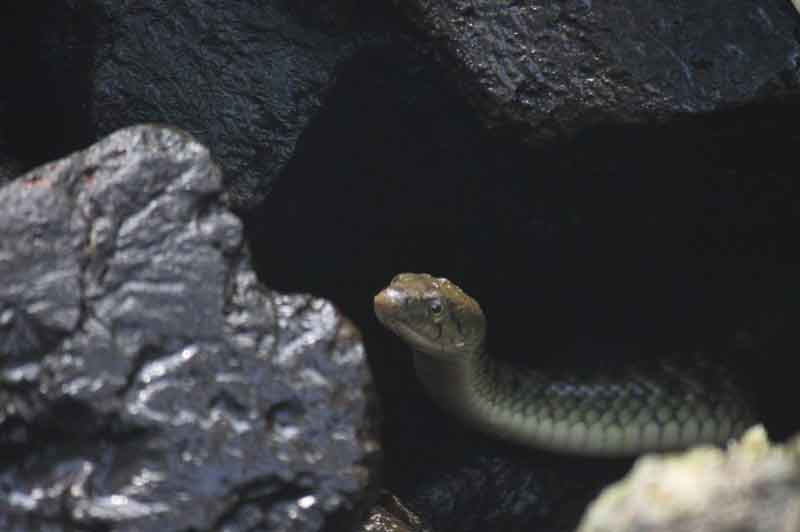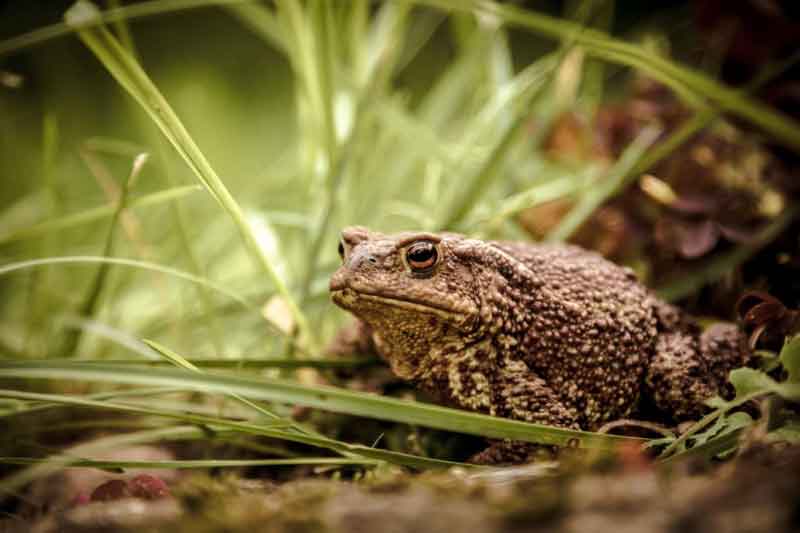A few weeks ago we dove deeper into how birds, bees and other bugs survive winter’s cold temperatures by migrating, burrowing or colonies dying off except for the queen who would start a new generation in spring. This week, it’s our final installment and we’re going to be covering a segment of the Animal Kingdom that sometimes gets forgotten about… the reptiles and amphibians! Let’s see how these cold-blooded creatures handle the transition to winter.
Reptiles & Amphibians
As with insects, I’d bet most people don’t know much about our scaly and slimy garden residents, the reptiles and amphibians! We’ve definitely got both here at the Garden, although they’re less likely to be seen than birds or mammals – especially during the winter. You may hear frogs singing in the spring and summer at our ponds and a stray turtle can be seen crossing some of the trail paths when it’s warm.

Snakes
Snakes aren’t seen much during the winter, and for good reason. Like other reptiles, amphibians and insects, they do not generate their own body heat. This means that cold weather equals low energy, and not enough body heat to move around.
Snakes will enter a state of dormancy, similar to hibernation, to ride out of the winter. Like many of the other critters we’ve talked about, they try to find a warm spot to hide in like an underground den.
Interestingly, although many snakes are usually solitary, some species will group together during the winter to help preserve heat.

Frogs & Toads
Frogs and toads will frequently burrow into the mud to stay warm during winter, and some are even able to freeze safely in a way that does not harm them! Much like the trees we mentioned in our “How Plants Survive The Winter” blog post, they allow non-cellular fluids to freeze while keeping the cells of their bodies safe.
Turtles will also dig down into soft mud to stay warm. Between the water and the dirt, there is a lot less exposure to the air, biting wind and cold temperatures.
With so many ways to deal with the cold, how will you be handling it this season? A mug of cider, a warm coat or just staying inside? All of these sound like good ideas!
No matter what you choose to do, it’s worth keeping in mind what the wildlife we live alongside has to face so we can better appreciate them throughout the seasons.
Sources
- Dnr.wisconsin.gov – Wildlife Damage
- Eekwi.org – Chipmunks
- Wildlifedamage.uwex.edu – Chipmunks & Ground Squirrels
- Lpzoo.org – Squirrels
- Postcrscent.com – Wildlife Winter Adaptations
- Scottishwildlifetrust.org.uk – Torpor and Hibernation
- Nationalforests.org – Bears and Hibernation
- UWM.edu – Dragonflies
- Ironmountaindailynews.com – Dragonflies
- Fyi.extension.wisc.edu – Butterflies
- Madison.com – Frogs
- Wisconsinbumblebees.entomology.wisc.edu – Bumblebees
- Eekwi.org – Ladybeetles





